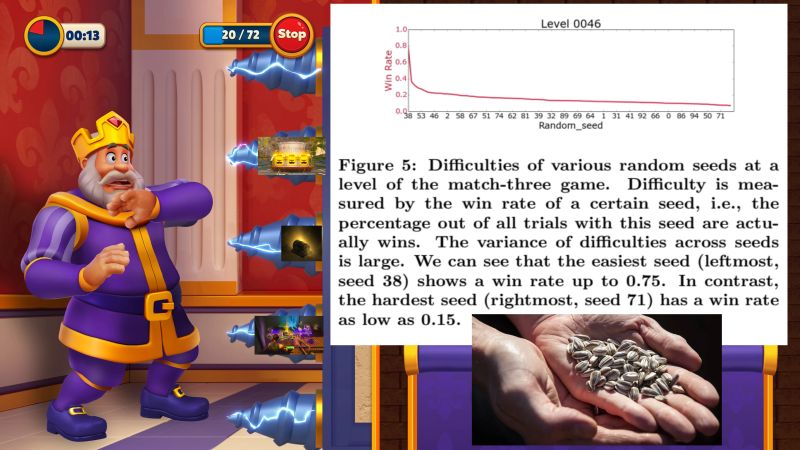
Seeds are one of the most powerful variables in game design.
Journal 14 Phillip Black April 15

Seeds are one of the most powerful variables in game design, and one of the least acknowledged.
EA’s Data Science team published a paper showing a 5x difference in win rate—from 15% to 75%—based only on the seed used to initialize a board. The level design and other match parameters remained the same!
Computers can’t generate genuine randomness, so they “anchor” on seeds: a fixed number generates a pseudo-random sequence. The initial board state is the same if the seed stays the same. Without fixed seeds, every level must be balanced across the entire range of possible outcomes.
When match designers look at attempts per success, seeds hide so much of the variability in experience, creating uneven ground to balance against. Battle Royales do this too, wherein loot tables are often seeded, either consciously selected or not.
The hierarchical rules of seeds unlock incredible experimentation opportunities. What if the seed changes based on the player’s win streak? What if an easier seed is selected on a player’s (x+1) attempt? What if the seed changes after a continue purchase? What if the engine automatically determines the highest retention seed? Some of the most fun we’ve had at The Experimentation Group is answering these questions.
Seeds demand analytical relevance more than anything. I can count on one hand the number of times I’ve seen seeds on a dashboard, either on mobile or HD. Overlooking seeds leaves optimization gains untapped!







